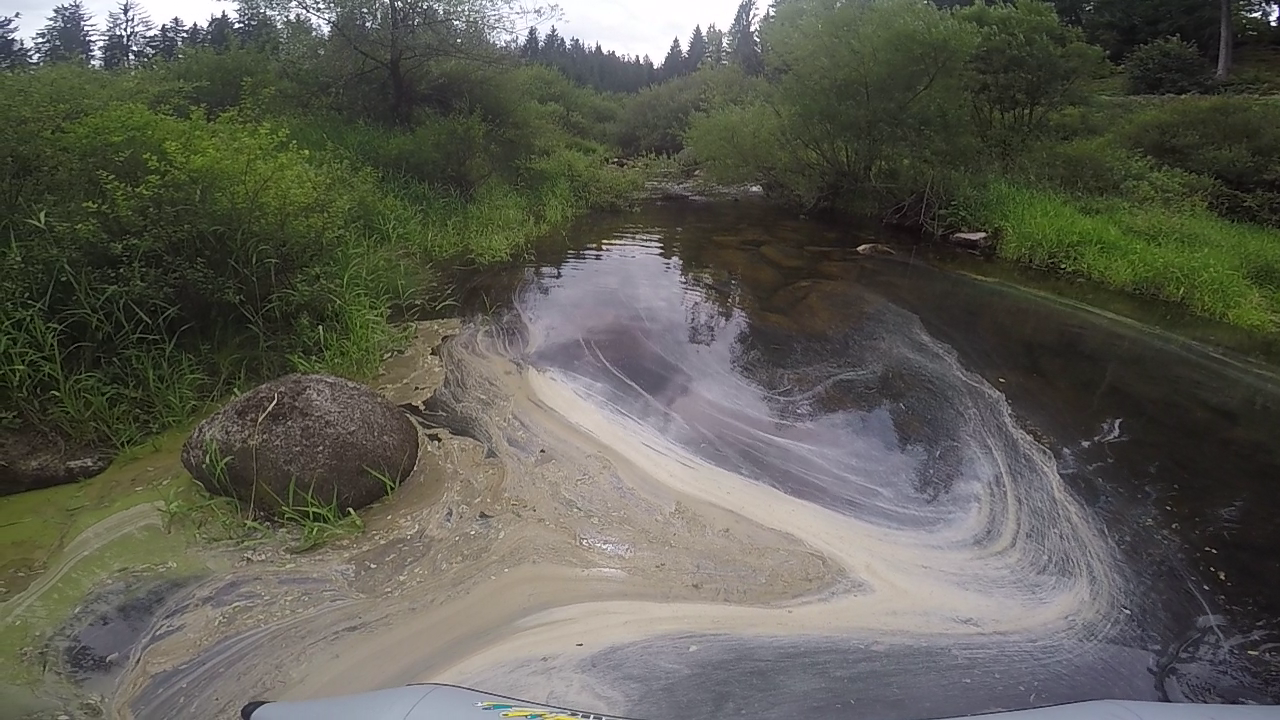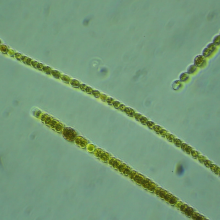Important Results
1) The seasonal dynamics of cyanobacterial blooms in Schwarzenbach Reservoir are determined by the availability of dissolved nutrients (N:P), with diazotrophic (N2-fixing) cyanobacteria benefiting from decreasing N availability throughout the year.
2) Declining N:P ratios over the decades resulted in a shift from non-diazotrophic cyanobacteria, such as Microcystis sp. to diazotrophic, toxin-producing cyanobacteria, such as Dolichospermum sp. in Schwarzenbach Reservoir.
3) Parasitic fungi (chytridiomycetes) influence seasonal dynamics within regularly occurring Dolichospermum blooms, potentially leading to a shift toward more resistant species or genotypes.
4) Sediment properties (texture and stability; WP1 and WP2) influence cyanobacterial recruitment from sediment.
Brief summary
Motivation: Understanding cyanobacterial (blue-green) bloom dynamics and the influence of management strategies, zooplankton interaction and environmental factors.
Novelty: Cyanobacterial (blue-green) bloom dynamics in an artificial water-reservoir, with a special focus on filamentous nitrogen-fixing cyanobacteria.
Strategy: Field monitoring and modelling of different pumping scenario; Mesocosm experiments with a focus on grazer-cyanobacteria interaction; Growth / competition experiments under controlled conditions.
Expected results: Exploring the physicochemical and biological factors triggering bloom and toxin formation to establish future monitoring and management strategies. Main focus is the toxin production of cyanobacteria, water level fluctuations, mixing events due to reservoir management and climatic influences.


(A) Motivation: Reservoirs and dams used for hydropower or drinking water supply are subject to major anthropogenic and environmental influences, leading to a decreased water quality. One reason for this are cyanobacterial blooms. Being usually an important part of the aquatic food web, cyanobacteria can develop to very dense colonies in the water, forming so called harmful cyanobacterial blooms (HCB). Cyanobacteria are known to produce a large variety of toxins frequently resulting in human and animal poisoning events.
HCB appear favoured by high temperatures, a stratified water column, high nutrient input and grazers. The grazing impact on cyanobacteria depends on morphological properties, biochemical food quality, and the presence and type of toxins. Dormant stages of pelagic and benthic cyanobacteria may serve as a continuous source for inoculating surface waters.
(B) Novelty: There is huge variety in species diversity and environmental preferences among cyanobacteria. While some species and their population dynamics in natural lakes are better understood, there is a dearth of information regarding cyanobacteria in artificial reservoirs, especially those that are managed via pumping schemes. Of the presently described cyanobacteria filamentous and nitrogen-fixing species are much less studied than coccal species.
(C) Strategy: To explore the physicochemical and biological (grazing) factors potentially influencing the cyanobacterial community composition and toxin production, laboratory (mono- and multispecies chemostat cultures, biofilm monitoring system) and in situ field experiments (mesocosms, exposure of nutrient-enriched artificial substrates) will be conducted. The mechanistic laboratory and in situ experimental data will then be reconciled with the descriptive data of the field samplings and linked to the data from the other WPs.
(D) Achievable Goals: The objective of this WP is to explore the physicochemical and biological (grazing and competition) factors favouring pelagic and benthic cyanobacterial bloom formation in reservoirs to establish future monitoring and management strategies. The Schwarzenbachtalsperre with recurrent HCB, will serve to determine whether the abundance and/or biodiversity of pelagic cyanobacteria are affected by several factors. The latter being: anthropogenic activities, land use within the catchment area (erosion, nutrient input), water level fluctuations and mixing events due to reservoir management or climatic influences. A particular focus will be on toxin-producing species as they are important determinants regarding environmental and human health as well as ecosystem diversity.


